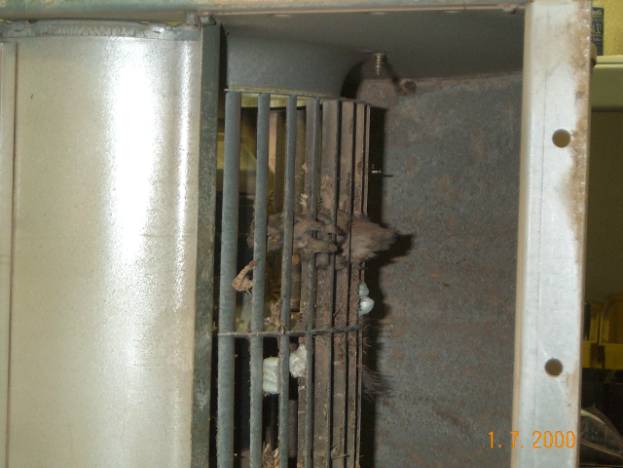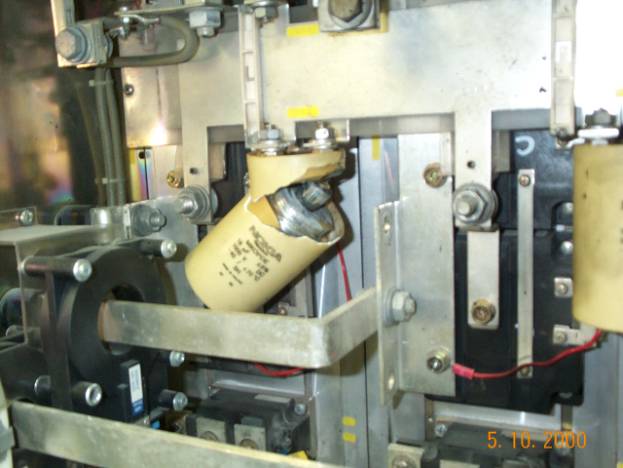
AutomatedBuildings.com
|
[an error occurred while processing this directive] |

Dave Polka,
Drives Training Manager, ABB Inc., Drives & Power Electronics.
ABB Inc., Drives & Power Electronics
Maintaining Variable Frequency Drives Can Be Simple, If You Understand and Follow Some Basic Practices
Do you know how to maintain Variable Frequency Drives (VFDs)? Doing so is easier than you might think. By integrating some simple, logical steps into your preventative maintenance program, you can ensure your drives provide many years of trouble-free service. Before looking at those steps, let's quickly review what a VFD is and how it works.
[an error occurred while processing this directive]A
quick overview
A VFD controls the speed, torque and direction of an AC Induction motor. It
takes fixed voltage and frequency AC input and converts it to a variable voltage
and frequency AC output. The Table shows what the three main sections of a VFD
are, and what they do. In very small VFDs, a single power pack unit may contain
the converter and inverter. Fairly involved control circuitry coordinates the
switching of power devices, typically through a control board that dictates the
firing of power components in the proper sequence. A microprocessor or Digital
Signal Processor (DSP) meets all the internal logic and decision requirements.
From this description, you can see a VFD is basically a computer and power
supply. And the same safety and equipment precautions you'd apply to a computer
and to a power supply apply here. VFD maintenance requirements fall into three
basic categories:
Let's look at each of these.
Keep it Clean
Most VFDs fall into the NEMA 1 category (side vents for cooling airflow) or
NEMA 12 category (sealed, dust-tight enclosure). Drives that fall in the NEMA 1
category are susceptible to dust contamination. Dust on VFD hardware can cause a
lack of airflow, resulting in diminished performance from heat sinks and
circulating fans.
Photo 1. Fan injecting dust particles into VFD
Dust on an electronic device can cause malfunction or even failure. Dust absorbs moisture, which also contributes to failure. Periodically spraying air through the heat sink fan is a good PM measure. Discharging compressed air into a VFD is a viable option in some environments, but typical plant air contains oil and water. To use compressed air for cooling, you must use air that is oil-free and dry or you are likely to do more harm than good. That requires a specialized, dedicated, and expensive air supply. And you still run the risk of generating electrostatic charges (ESD). A non-static generating spray or a reverse-operated ESD vacuum will reduce static build-up. Common plastics are prime generators of static electricity. The material in ESD vacuum cases and fans is a special, non-static generating plastic. These vacuums, and cans of non-static generating compressed air, are available through companies that specialize in static control equipment.
Keep it Dry
In Photo 2 you can see what happened to a control board periodically
subjected to a moist environment.
Initially, this VFD was wall-mounted in a clean, dry area of a mechanical room and moisture was not a problem. However, as is often the case, a well-meaning modification led to problems. An area of the building required a dehumidifier close to the mechanical room. Since wall space was available above the VFD, this is where the dehumidifier went. Unfortunately, the VFD was a NEMA 1 enclosure style (side vents and no seal around the cover). The obvious result was water dripping from the dehumidifier into the drive. In 6 months, the VFD accumulated enough water to produce circuit board corrosion. What about condensation? Some VFD manufacturers included a type of "condensation protection" on earlier product versions. When the mercury dipped below 32 degrees Fahrenheit, the software logic would not allow the drive to start. VFDs seldom offer this protection today. If you operate the VFD all day every day, the normal radiant heat from the heatsink should prevent condensation. Unless the unit is in continuous operation, use a NEMA 12 enclosure and thermostatically controlled space heater if you locate it where condensation is likely.
Keep Connections Tight
While this sounds basic, checking connections is a step many people miss or
do incorrectly-and the requirement applies even in clean rooms. Heat cycles and
mechanical vibration can lead to sub-standard connections, as can standard PM
practices. Re-torquing screws is not a good idea, and further tightening an
already tight connection can ruin the connection (see Sidebar). Bad connections
eventually lead to arcing. Arcing at the VFD input could result in nuisance over
voltage faults, clearing of input fuses, or damage to protective components.
Arcing at the VFD output could result in over-current faults, or even damage to
the power components. Photos 3 and 4 show what can happen.
Photo 3. Loose input power connections
Photo 4. Loose output power connections
Loose control wiring connections can cause erratic operation. For example, a loose START/STOP signal wire can cause uncontrollable VFD stops. A loose speed reference wire can cause the drive speed to fluctuate, resulting in scrap, machine damage, or personnel injury.
Additional steps
Inspect DC bus capacitors for
bulging and leakage. Either could be a sign of component stress or
electrical misuse. Photos 5 and 6 show fan and capacitor stress
problems.

Photo
5. Foreign object in fan

Photo 6. Capacitor stress problem
Sidebar: Re-torquing -- A screwy
practice
Although "re-torquing" as a way of checking tightness is common in
many PM procedures, it violates basic mechanical principles and does more harm
than good. A screw has maximum clamping power at a torque value specific to its
size, shape, and composition. Exceeding that torque value permanently reduces
the clamping power of that screw by reducing its elasticity and deforming it.
Loosening and then re-torquing still reduces elasticity, which still means a
loss of clamping power. Doing this to a lock washer results in a permanent 50%
loss. What should you do? Use an infrared thermometer to note hot connections.
Check their torque. If they have merely worked loose, you can try retightening
them. Note which screws were loose, and be sure to give them an IR check at the
next PM cycle. If they are loose again, replace them. Finally, don't forget the
"tug test." This checks crimps, as well as screw connections. Don't do
this with the drive online with the process, though, or you may cause some very
expensive process disturbances.
[an error occurred while processing this directive]
[Click Banner To Learn More]
[Home Page] [The Automator] [About] [Subscribe ] [Contact Us]